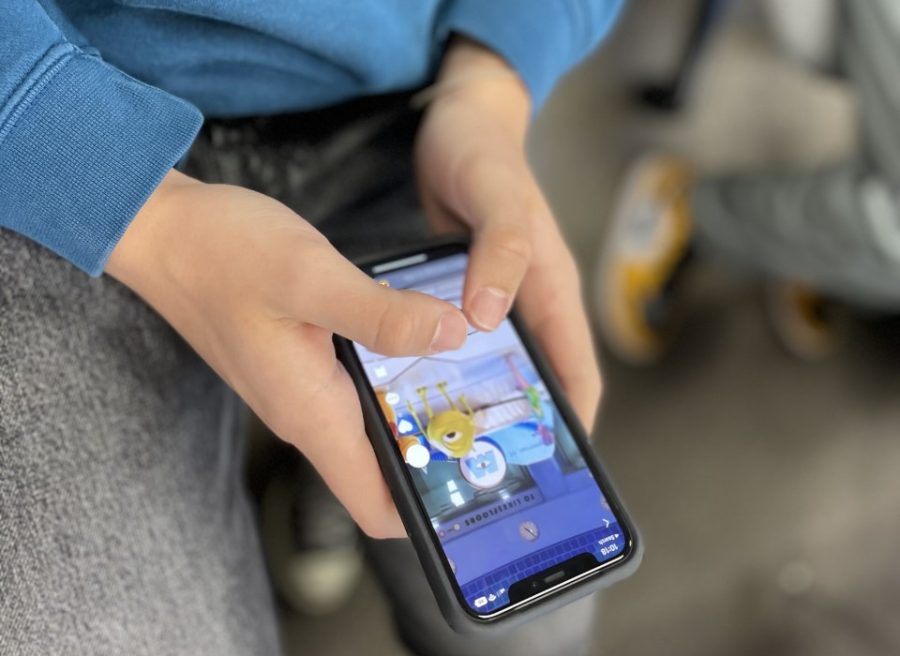How One App Has A Generation Captured — and It Won’t Let Go
Have you ever found yourself relying on social media platforms and not being able to look away from the screen? This is how most apps, such as TikTok, target younger audiences and take advantage of their time and attention.
Younger users trust and rely on the app for information because to them, it’s seen as a peer review on the products they desire.
Sometimes it seems easier to search things on Tiktok than on Google because it can be faster and more direct with its search results by showing certain videos; it can also make a source seem more dependable when someone is explaining their personal experiences about a topic. It’s likely that you will trust something more when someone is expressing their review of a subject because it’s relatable and seems genuine.
The habit of constantly utilizing TikTok to consume information can actually be harmful to a person over time. According to Ann Pietrangelo from Healthline.com, the overuse of social media in general can be extremely damaging and addictive due to the constant amount of dopamine being sent to the brain. Dopamine is a chemical in your brain that makes people feel good and happy, but too much of this can cause anxiety, trouble sleeping, and stress. According to Hannah Aster from Shortform.com, this is the result of overusing social media platforms, like TikTok which become addictive and can negatively impact mental health.
Not only can these platforms be addictive and leave users constantly mindlessly browsing topics, but this is also a marketing strategy that makes people think they are searching for one thing, then find themselves using the app for hours on end. According to InsiderIntelligence.com, “58% of American teenagers ages 13 to 17 visit TikTok at least once a day” and according to Wallaroo.com, the average person opens TikTok eight times a day and spends up to 95 minutes a day using the app.
TikTok uses search history to supply users with videos and ads targeting their interests. So not only are users watching videos related to their searches, but they are watching videos that are promoting certain products and ideas for marketing purposes only. What feels like a reliable video could actually be a tactic by social media platforms to make users want more than what they originally searched for.
TikTok is one of the most popularly used platforms in the world and is constantly improving to be more gravitating for users, according to Datareportal.com TikTokis the sixth most used social media platform in the world, with over one billion monthly users. Out of those one billion monthly users, Generation Z uses TikTok more than any generation out there.
According to Evelyn Mitchell from Insiderintelligence.com, “We estimate that 61.3% of the Gen Z cohort in the US uses TikTok at least once a month…and 16% access TikTok almost constantly.”
According to research conducted by Pew Research Center this spring, “Growing up in a time when most of your life is influenced by a highly addictive app can be damaging to your mental health.” Helpguide.org agrees, “However, multiple studies have found a strong link between heavy social media and an increased risk for depression, anxiety, loneliness, self-harm, and even suicidal thoughts.”
Additionally, because TikTok releases dopamine and makes the brain feel good, if users are constantly on it, they may feel like they can’t live without it because the obsession with it will grow when they are not on the app. Courtney Seiter from Buffer.com says, “Dopamine causes us to seek, desire, and search. Dopamine is stimulated by unpredictability, by small bits of information, and by reward cues—pretty much the exact conditions of social media. The pull of dopamine is so strong that studies have shown tweeting is harder for people to resist than cigarettes and alcohol.”
Apps like TikTok will get its users hooked and can affect their daily life without them realizing it. It’s important to understand the damaging side of social media especially because there are so many people using it. There are safer ways to browse and explore what’s on the internet without the side effects of becoming addicted and obsessed.


